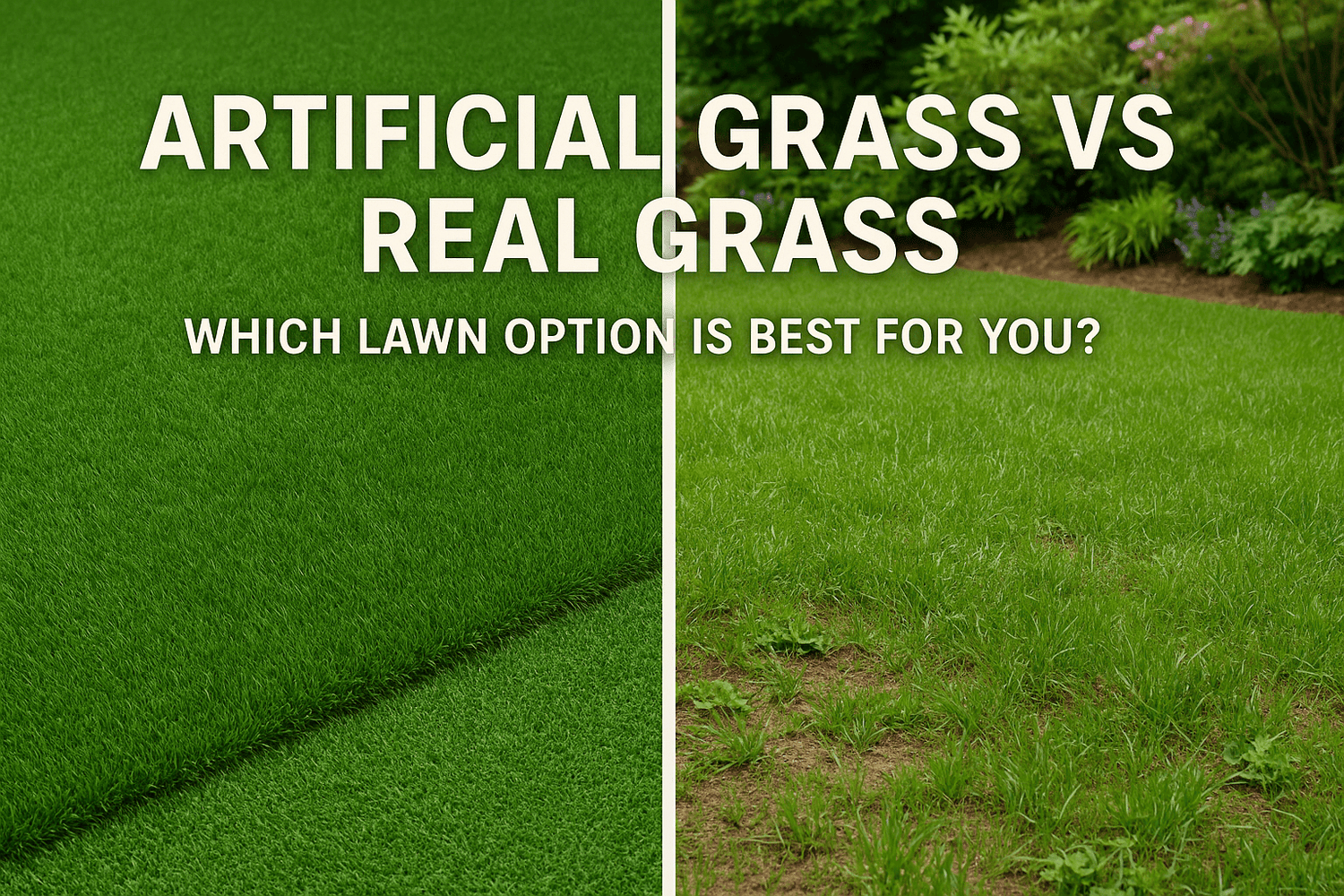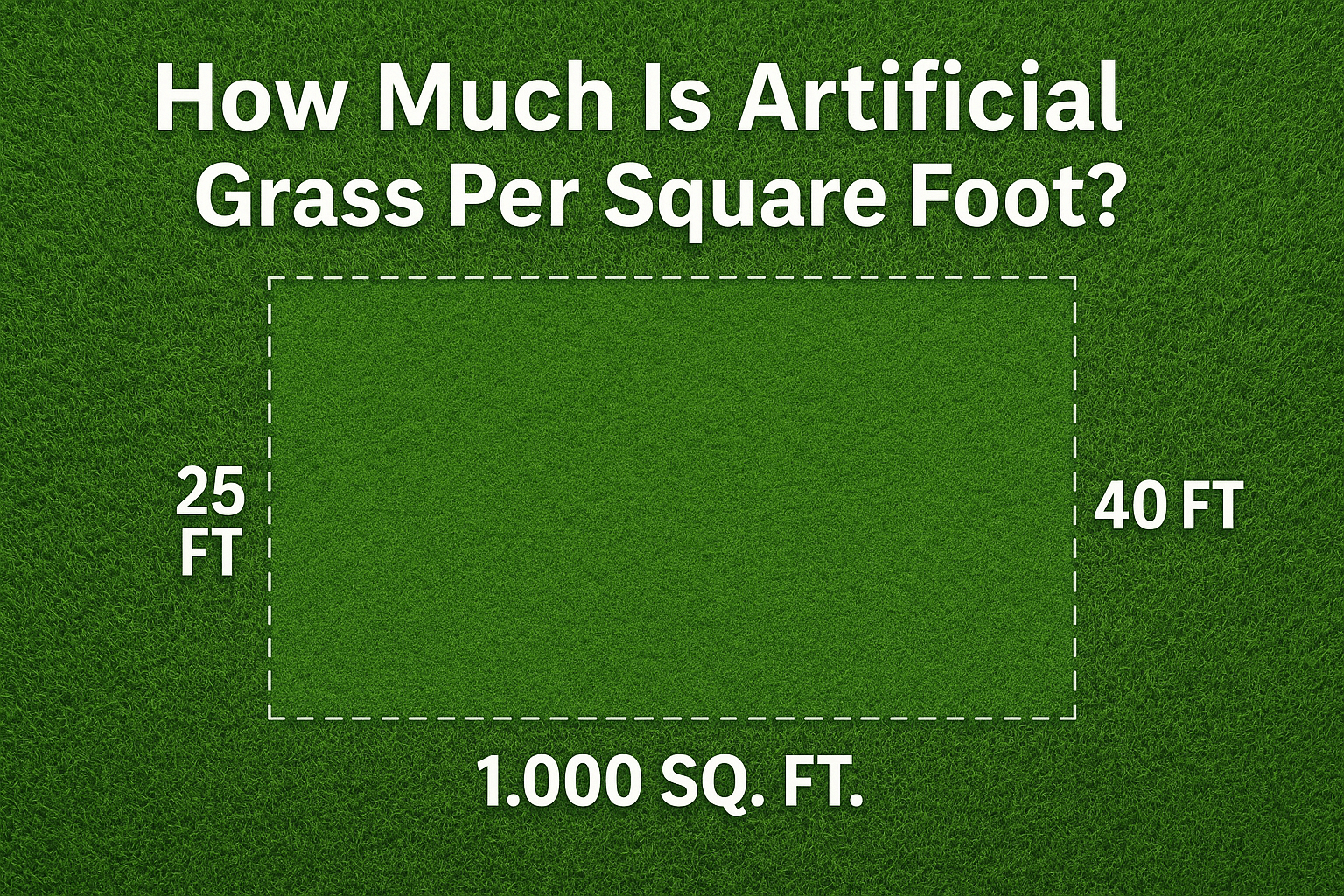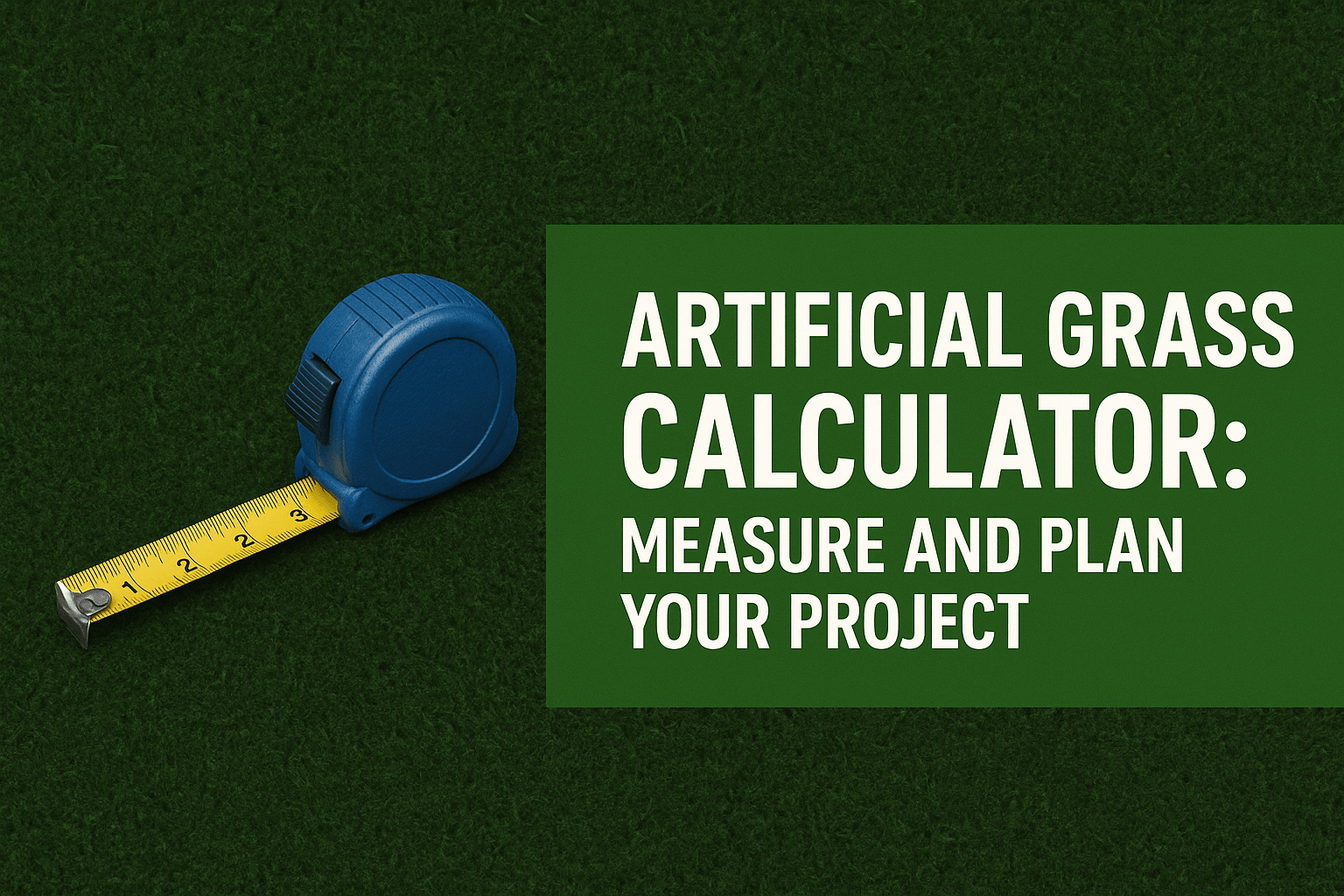More homeowners today are asking a simple question: Should I choose artificial grass or real grass for my yard?
The debate is growing, and it makes sense. People are busier now. There’s less time for mowing and yard work. Water is also becoming more expensive, and many places now have droughts or restrictions.
Choosing the right lawn means thinking about looks, cost, care, and long-term results. This article will give you a clear and honest comparison between natural grass and artificial turf. You’ll learn what each type offers and where it falls short.
Visual Appeal and Aesthetic Quality
When it comes to beauty, natural grass has its fans. It feels soft and cool. It grows in different shades and has little imperfections that make it look alive. In spring, it smells fresh and green. But it also has bare spots, weeds, and sometimes turns yellow.
Artificial grass lawns always look neat. They stay green all year and don’t get patchy from pets or shade. Modern synthetic fibers come in many styles and colours. Some fake lawns even copy real grass types. This makes fake grass look much more natural than it did years ago.
Upfront Installation Cost Comparison
Let’s talk money. Installing artificial turf takes more work and materials than planting natural turfs. It needs ground preparation, infill material, a backing material, and sometimes a shock pad for sports areas. You may need professional installation, which adds to the cost.
Real grass needs soil preparation, and if you use sod, it’s ready fast. If you plant seeds, it’s cheaper but takes time to grow. You’ll also need a sprinkler system or irrigation system to water the lawn. Prices can change depending on your area and lawn size.
Here’s a simple table based on a 1,000 square foot lawn:
25-Year Cost and Maintenance Comparison Table
|
Factor |
Artificial Grass (Low) |
Artificial Grass (High) |
Real Grass (Seed) |
Real Grass (Sod) |
Notes |
|
Installation Cost |
$8,000 |
$10,000 |
$1,000 |
$2,000 |
Based on 1,000 sq. ft. |
|
Annual Maintenance |
$281 |
$350 |
$2,002 |
$2,002 |
Maintenance costs |
|
25-Year Maintenance |
$7,025 |
$8,750 |
$50,050 |
$50,050 |
Long-term care |
|
Total 25-Year Cost |
$15,025 |
$18,750 |
$51,050 |
$52,050 |
Full lifetime cost |
|
Water Usage (gallons) |
~6,500 |
~10,000 |
~24,920 |
~15,000 |
Affects water bills |
|
Break-Even Point |
4–6 years |
6–8 years |
— |
— |
ROI for turf |
Maintenance Demands Over Time
One of the biggest differences between artificial turf and natural grass is how much work each one needs.
With synthetic turf, you don’t need to mow, water, or use weed killer. Just rinse it with a hose every now and then to clean dust or pet waste. Some areas may need a brush-up to keep the blades standing. Once a year, you might refill the infill material.
Real grass takes a lot more time. You need to mow every week during the growing season. You’ll also fertilize, control weeds, water often, and handle pest control. If you forget, it quickly turns brown or patchy.
The EPA says that mowing with a gas-powered machine for one hour makes as much air pollution as driving 11 cars. That shows how much environmental impact real grass can have if not managed right.
So when thinking about artificial grass vs real grass, maintenance costs and time should be a key part of your decision.
Water Use and Drought Performance
Water conservation is one of the biggest reasons people switch to artificial turf. Once installed, synthetic turf needs very little water. A light rinse every few weeks is enough to keep it clean. That’s it. No daily watering, no sprinkler system, and no stress during dry seasons.
On the other hand, natural grass drinks a lot of water. To stay green and healthy, it may need over 24,000 gallons per year for just a 1,000 square foot lawn. In places with drought or water bills going up, this can be a big problem.
Environmental Impact – The Good and the Complex
Let’s be honest. Both natural grass and artificial turf affect the environment in different ways.
Real grass has some strong benefits. It makes oxygen, absorbs carbon dioxide, and helps soil stay in place. It also supports bugs, birds, and other small animals. These things help our ecosystem and make the planet healthier.
But natural lawns also come with problems. Lawn mowers release gas and cause air pollution. Many people use fertilizers and weed killers, which can run into rivers and harm fish. Grass clippings often go to landfills and create more trash.
Artificial grass helps avoid those issues. You don’t need to mow, fertilize, or spray chemicals. You also use far less water. That’s a big win for people trying to reduce their environmental footprint.
Still, turf has downsides too. It’s made from plastic, so it doesn’t break down in the ground. Some older turf contains crumb rubber from recycled car tires, which may release microplastics over time. This worries some scientists and families.
In the end, both choices have good and bad sides. Choosing between artificial grass vs real grass means thinking about what matters most to you—whether it’s water use, wildlife, or plastic waste.
Safety, Hygiene, and Family Usage
If you have pets or kids, you want a lawn that’s clean and safe. Here’s how each option compares.
Natural grass feels soft under bare feet. But it can also bring problems. Wet weather means mud, while dry weather brings dust. Grass stains clothes and can trigger allergies. Also, fertilizers or weed sprays can be harmful if kids or pets touch them.
Artificial grass stays dry and even. There’s no mud, and pets won’t dig it up. Many newer artificial grass lawns have antimicrobial infill, which helps stop bacteria and smells. They also have drainage layers, so water and pet urine go straight through. That helps with odor control too.
Some people worry about turf being toxic. But most synthetic turf surfaces used in homes don’t contain PFAS chemicals or harmful crumb rubber. High-quality turf uses safe materials and passes health checks.
Durability and Wear Resistance
How long will your lawn last? That depends on what kind you pick.
Synthetic grass is made to be tough. It can handle dogs, kids, sports, and hot or cold weather. Good turf lasts between 10 and 25 years. It doesn’t fade, dry out, or get muddy. That makes it great for sports fields, putting greens, and busy homes.
Real grass, however, wears out faster. Heavy foot traffic can leave bald spots. Dogs may dig or damage it. Drought can kill patches, and pests might ruin the rest. You can replant or reseed, but it takes time and effort. Over time, natural turfs need a lot of care to stay green.
So in terms of toughness, artificial grass is the clear winner. It’s strong, long-lasting, and can handle almost anything you throw at it.
Property Value and Market Appeal
A green, healthy lawn makes any home look better. But which type adds more value?
In many places, real grass still offers more curb appeal. It feels natural and fits in with surrounding yards. Some buyers prefer that classic look.
But in dry states like California or Texas, more buyers now want low-maintenance landscaping. Water is expensive. Long weekends are busy. Artificial turf is becoming a smart feature, not a strange one.
Tastes are changing. Today, people often choose function over tradition. A lawn that looks good all year and needs little work is a big plus.
Learning from LITA GRASS – A Real-World Perspective
Choosing the right type of turf isn’t always easy. LITA GRASS provides dedicated support to help you make the best decision for your property.
Their team is available to walk you through the process. Their knowledgeable staff can help you understand the differences between turf types, recommend products that suit your space and budget, and answer questions about installation and care.
One of the biggest advantages of working with LITA GRASS is their hands-on approach. You can contact their team directly for personalised guidance and practical advice. They’ll help you consider factors like usage, sun exposure, drainage, and long-term value. If you’re unsure about measurements, installation planning, or product suitability, they’re happy to assist.
LITA GRASS supports customers across a wide range of residential and commercial projects, with a focus on quality and customer satisfaction.
Final Verdict – Which Lawn Is Right for You?
In the end, both artificial grass and natural grass can be great choices. It all comes down to what works best for your home and your life.
Here’s a quick checklist to help you decide:
- Do you have time for weekly lawn maintenance?
- Is your area hot or dry?
- Do you have pets or kids?
- Can you afford a bigger initial investment for long-term savings?
The debate isn’t just about looks. It’s about your time, your budget, your climate, and your values.
Ready to make the switch or still weighing your options?
Explore trusted turf guides and product tips at LITA GRASS to make the best decision for your home and lifestyle.



Leave a comment
This site is protected by hCaptcha and the hCaptcha Privacy Policy and Terms of Service apply.